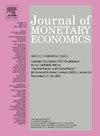劳动力市场的合并指南
IF 4.3
2区 经济学
Q1 BUSINESS, FINANCE
引用次数: 0
摘要
将合并审查准则应用于劳动力市场对福利、工资和产出的影响是什么?为了回答这个问题,我们发展了一个多工厂所有制和劳动力市场垄断的理论。我们使用美国人口普查数据来估计模型,并证明该模型能够复制合并后就业和工资的经验记录路径。然后,我们模拟了一组具有代表性的美国合并,以评估合并审查阈值。假设合并产生5%的效率收益,我们的模拟在执行更宽松的2010年合并指导方针下产生福利损失,在执行更严格的2023年和1982年合并指导方针下产生福利收益。最后,我们估计了在每组合并准则下允许合并对产出和劳动收入份额的总体影响。本文章由计算机程序翻译,如有差异,请以英文原文为准。
Merger guidelines for the labor market
What are the welfare, wage, and output implications of applying merger review guidelines to the labor market? To answer this question, we develop a theory of multi-plant ownership and labor market monopsony. We estimate the model using U.S. Census data and demonstrate the model’s ability to replicate empirically documented paths of employment and wages following mergers. We then simulate a representative set of U.S. mergers in order to evaluate merger review thresholds. Assuming mergers generate efficiency gains of 5 percent, our simulations yield welfare losses under the enforcement of the more lenient 2010 merger guidelines and welfare gains under enforcement of the more stringent 2023 and 1982 merger guidelines. Lastly, we estimate the aggregate effects of allowed mergers on output and labor’s share of income under each set of merger guidelines.
求助全文
通过发布文献求助,成功后即可免费获取论文全文。
去求助
来源期刊

Journal of Monetary Economics
Multiple-
CiteScore
7.20
自引率
4.90%
发文量
90
审稿时长
74 days
期刊介绍:
The profession has witnessed over the past twenty years a remarkable expansion of research activities bearing on problems in the broader field of monetary economics. The strong interest in monetary analysis has been increasingly matched in recent years by the growing attention to the working and structure of financial institutions. The role of various institutional arrangements, the consequences of specific changes in banking structure and the welfare aspects of structural policies have attracted an increasing interest in the profession. There has also been a growing attention to the operation of credit markets and to various aspects in the behavior of rates of return on assets. The Journal of Monetary Economics provides a specialized forum for the publication of this research.
 求助内容:
求助内容: 应助结果提醒方式:
应助结果提醒方式:


